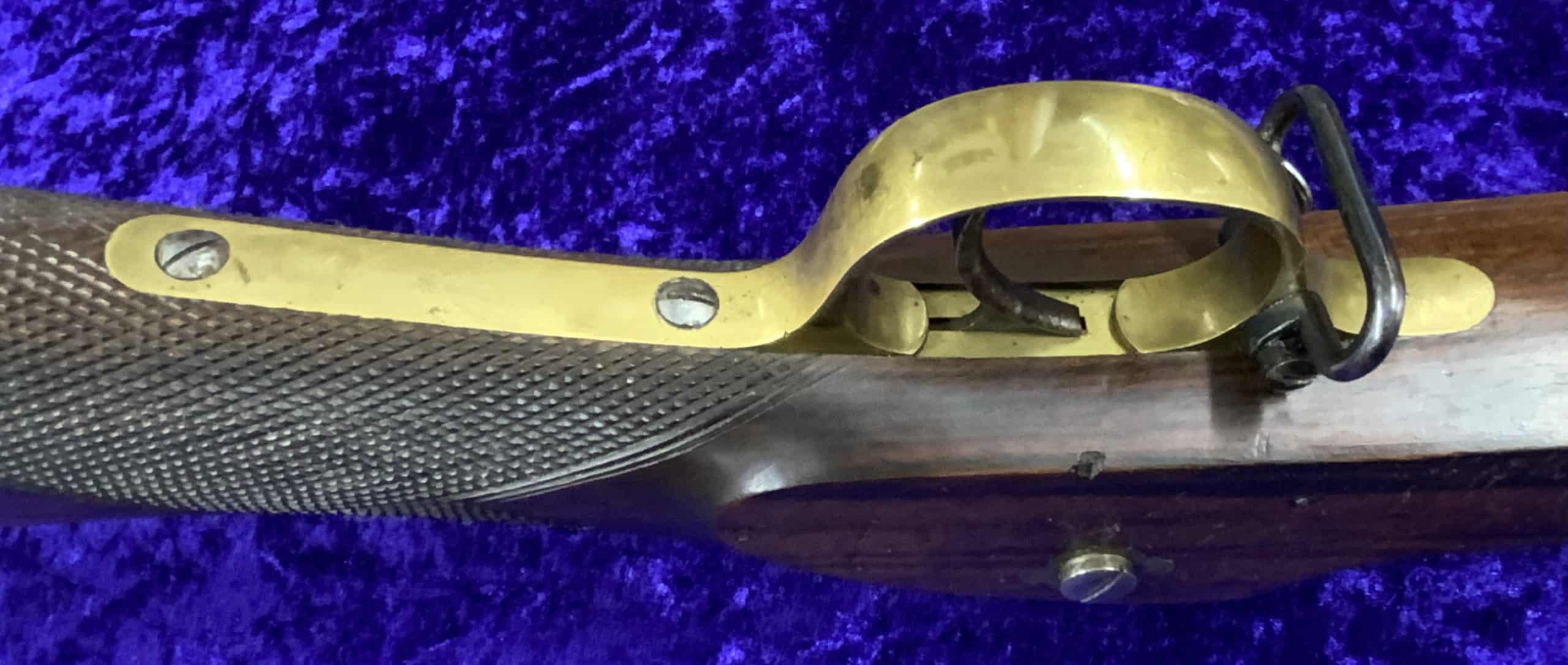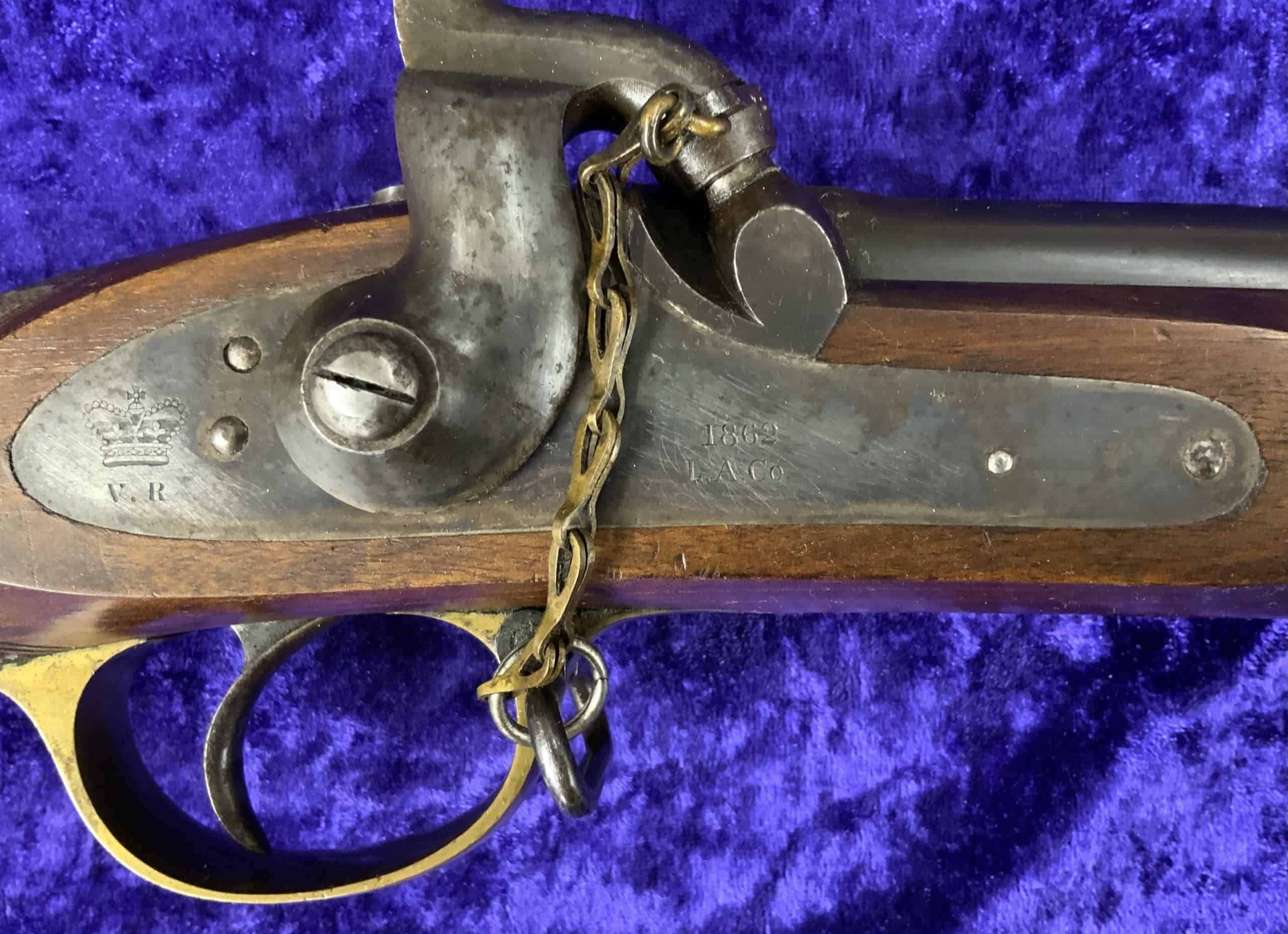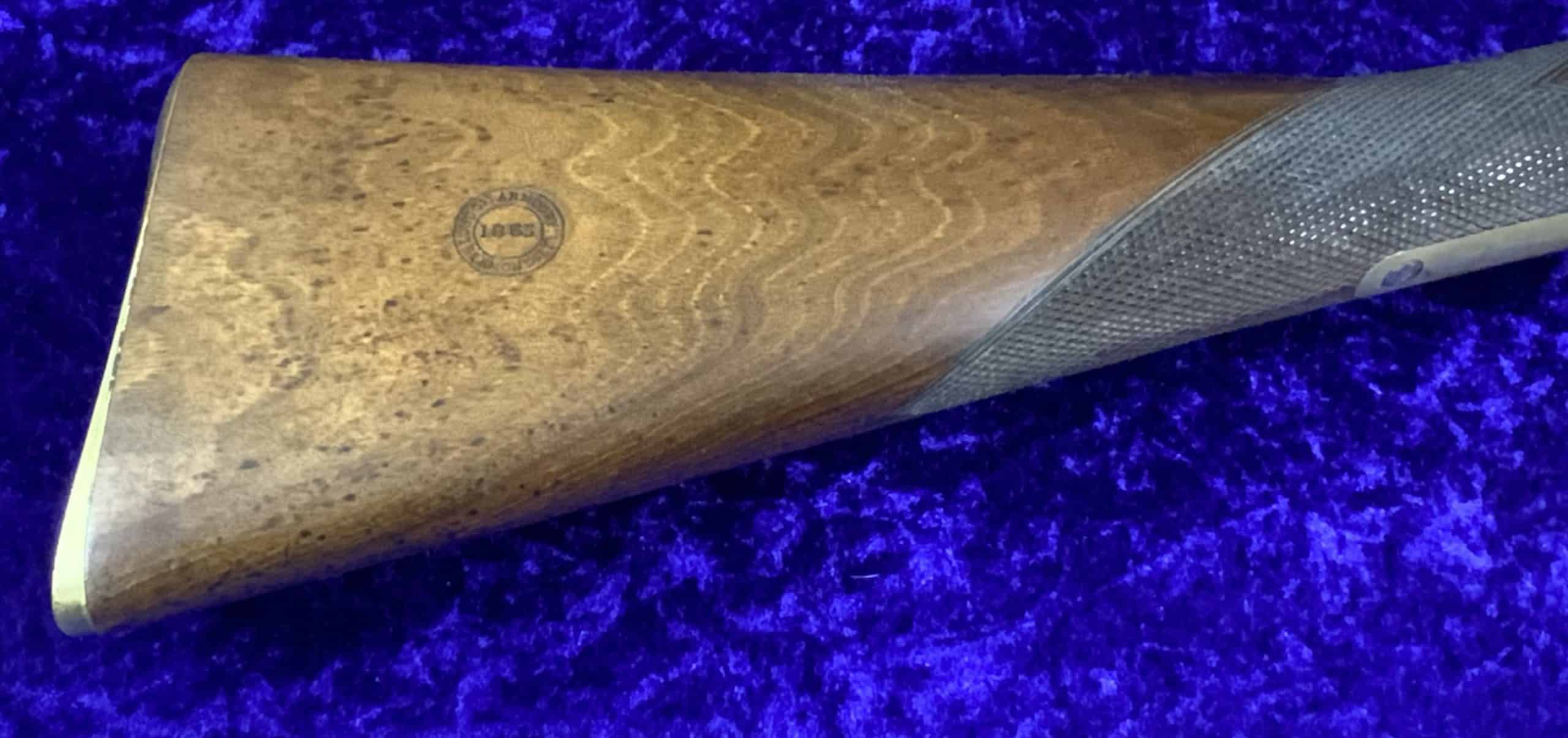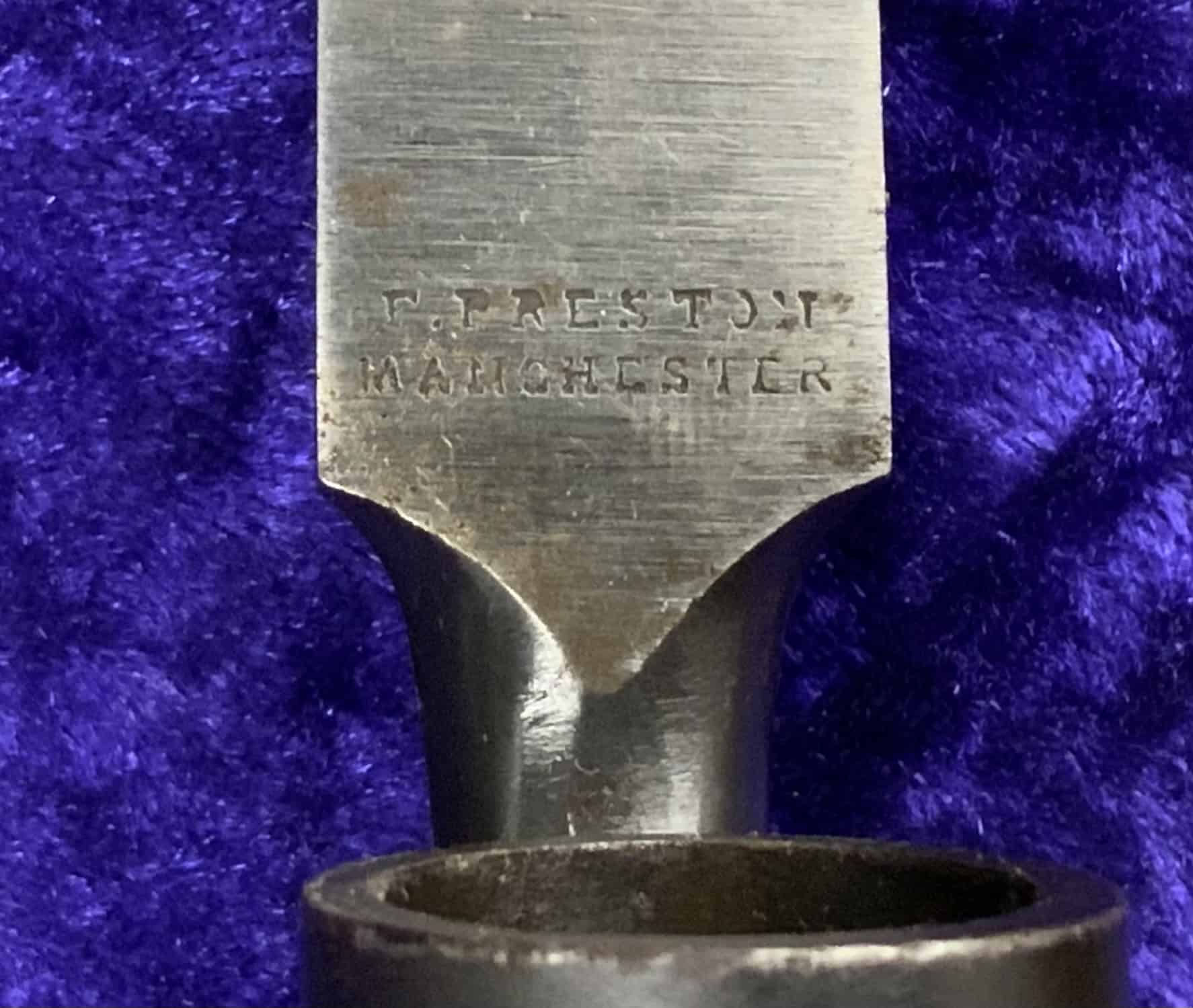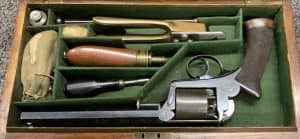Description
Cased 1863 .577 Rifle by The London Armoury Company
Cased .577 3-Band Enfield. A truly stunning “coffin” cased LAC 3-Band Enfield. Most unusually this is cased with bayonet, mould etc in it’s original case. This is an absolute “sleeper” and the rifle and accessories shown no signs of use. The bayonet, by F.Preston of Manchester is unused and the scabbard as new. The mould has never been used. The rifle is in perfect original condition and retains 99% of it’s original finish. It has a perfect 3 groove bore. This is surely the finest Enfield available.
Fitted with its original Kerr’s Patent combined muzzle stopper and sight protector – a rare item on its own.
Useful Registered Design Number: 4395
| Description: |
Useful Registered Design Number: 4395. Proprietor: James Kerr, Superintendent of the London Armoury Company Limited. Address: Bermondsey, London. Subject: Combined rifle muzzle stopper and sight protector. Category: Firearms, Guns, Ordanance, Gun-Carriages, Targets, Ammunition, Bayonets and Swords. |
|---|---|
| Date: | 1861 Aug 7 |
MANUFACTORY, VICTORIA PARK MILLS, OLD FORD
SHOW ROOMS 36 KING WILLIAM St E. C.
London ________186___
TO THE LONDON ARMOURY COMPANY, LIMITED
Manufacturers to Her Majesty’s War Department of
INTERCHANGEABLE ENFIELD RIFLES
EXACTLY SIMILAR TO THOSE MADE AT THE
ROYAL SMALL ARMS FACTORY AT ENFIELD.
Sole Manufacturers of Kerr’s Patent Small Bore Rifles, Combined Muzzle Stopper & Sight Protector & Registered Ammunition Pouch
Kerr’s Trade Label
London Armoury Company
The company was founded on February 9, 1856, with its factory established on the former site of the South-Eastern Railway Company in the Bermondsey section of London. The principal shareholder was Robert Adams, inventor of the Adams revolver. Another important stockholder was Adams’ cousin, James Kerr, who later invented the Kerrs Patent Revolver.
Adams had had a falling-out with his former partners, the Deane brothers, and intended that the Armoury manufacture his popular revolver. However the company obtained a British government contract for infantry rifles and in 1859 the company’s board of directors decided to expand rifle production, for which there was greater demand. Revolver production was decreased and Adams, disagreeing with the decision, sold his stock and left the company. Kerr then became the Armoury’s dominant figure.
Kerr, a former foreman at Deane Brothers, made improvements to the Enfield 1853 pattern rifled musket which the Armoury was manufacturing under contract. When Adams left the company he had taken his revolver patents with him, and Kerr therefore designed a new revolver in .36 and .44 (54 bore) calibre.
Production of the new revolver began in April 1859, but the company was not able to obtain a contract for it from the British government and civilian sales were modest.
However the following year the American Civil War began and the governments of both the United States and the Confederacy began purchasing arms in Britain. In November 1861 buyers for the Union army purchased 16 Kerr revolvers for $18.00 apiece. Two years later Confederate arms buyers Major Caleb Huse and Captain James Bulloch contracted for all the rifles and revolvers the Armoury could produce.
The Confederacy was now the London Armoury Company’s principal client and it manufactured and shipped more than 70,000 rifles and about 7,000 revolvers (out of a total production run of about 10,000) to the South. However these weapons had to pass through the Union blockade and the number of blockade runners that actually reached the Confederate army is unknown, however, enough of them made it through to keep the Confederacy well armed during the war. Confederates acclaimed the Armoury’s guns as the best weapons made in Britain.
The London Armoury Company was almost completely dependent on sales to the Confederacy and survived for only a year after the end of the war, dissolving in the Spring of 1866- however, most of the gunsmiths and staff of the London Armoury Company went on to form London Small Arms Co.Ltd in that same year.
Click here for more Antique Arms




